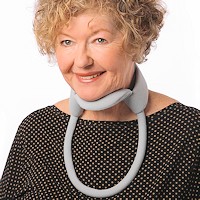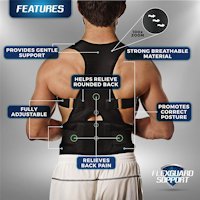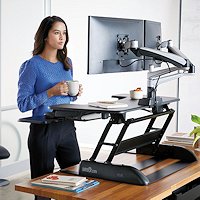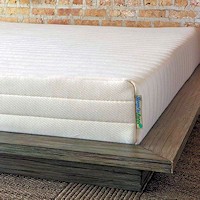Taking Some Simple Measure To Ease Neck Pain
Daily activities can place a lot of stress on the neck. Many often experience the strain felt after long hours working on a computer, or the crick in the neck feeling from cradling the telephone between the head and shoulder. There are many factors involved to ease neck pain and we will focus on non-complicated or non-specific neck pain.
 Neck pain usually develops over a period of time and is often related to posture problems combined with stress, leading to chronic strain which is easily provoked. It can be a flare-up of degenerative disc disease or arthritis. These problems lead to further stress, headaches, weak muscles causing more bad posture and not enough restorative rest.
Neck pain usually develops over a period of time and is often related to posture problems combined with stress, leading to chronic strain which is easily provoked. It can be a flare-up of degenerative disc disease or arthritis. These problems lead to further stress, headaches, weak muscles causing more bad posture and not enough restorative rest.
If you have a neck ache, it’s not surprising, since the bones, joints, discs, muscles and ligaments have to provide support and motion for the head. Since the head can weigh over 10 pounds, the neck needs to provide both stability and flexibility. That’s why we try to provide information regarding the different causes of neck pain. There are many ways to treat neck pain as well as preventing it from returning.
- A 2021 study in World Neurosurgery found muscle volume changes and fatty infiltration in the muscles are implicated the in the complex contribution of muscle morphological changes to cervical degeneration and the clinical course of neck pain.
Here are some basic helpful ways you can help ease neck pain and care for your neck.
There are methods to achieve better posture once it is lost, however, it is far easier to prevent poor postural problems in the first place. Try not to remain in one position for long periods, allowing the neck to get stuck in a harmful posture that can cause repeated strain injury to the neck structures. Try to recognize unhealthful postures and take measures to avoid prolonged positioning in an unhealthy posture. One way is to move around by taking a short break to get the blood flowing and then change your posture.
- If you work with computers or spend allot of time using computers, try to make ergonomic changes that effect posture for the better. Try to get set up so that the monitor is at the level of your eyes, so you can easily see it without bending or twisting your neck to one side, or having it too high or low, Instead of using a phone on one side or having to keep switching sides, get a hands free headset or hook up a good microphone. Instead of having a note tab or tablet flat, try to prop it up using a pillow or special holder, so that it will be at 45 degrees.
- Eye strain is common, so if you are wearing glasses, get checked frequently to make sure your prescription is correct. Wearing old glasses can cause compensation by moving your head into awkward postures.
- To ease neck pain, make sure you are sleeping on a supportive pillows that are designed for the neck. Too often, we will just pile up pillows, and this can lead to falling asleep in a very bad posture, resulting in a stiff neck as well as promoting loud snoring.
- While most people are aware that lifting something wrong can hurt your back, improper lifting can also hurt your neck. Take time to plan out moving any heavy object and don’t be afraid to ask for help. Make sure you review ways to make lifting more safe to help ease neck pain.
- If you have problems sleeping, make sure you get this addressed with your doctor. Lack of restful sleep robs your body of proper repair. It also is a risk factor for pain from musculoskeletal problems.
- Proper motion is important and specific neck exercises can be a crucial part of easing neck pain and restoring normal function.
This is an important exercise that is simple to do and can have profound effects.
An analysis in the journal Musculoskeletal Science & Practice indicates this exercise significantly reduces both pain and disability. The authors indicate it is more effective in reducing pain and disability than other treatments for non-specific neck pain.
While most neck pain is not serious and some basic modifications and therapies will help ease neck pain, symptoms like pain that radiates into the arms with numbness or weakness can be a sign of more complicated issues like a herniated disc or pinched nerve. If there is severe pain in the neck or if it accompanies a fever, these are neck pain symptoms that require immediate attention.
Below are some home methods that can be helpful:

 Neck Traction Devices
Neck Traction Devices Cervical Pillows
Cervical Pillows Neck Support Collars
Neck Support Collars Muscle Therapy Tools
Muscle Therapy Tools Head Supports
Head Supports Topical Pain Relievers
Topical Pain Relievers Special Pillows
Special Pillows Heat Therapy
Heat Therapy Cold Therapy
Cold Therapy TENS Therapy
TENS Therapy Posture Braces
Posture Braces Neck Stabilization
Neck Stabilization Ergonomic Aids
Ergonomic Aids New Mattresses
New Mattresses Relief Supplements
Relief Supplements